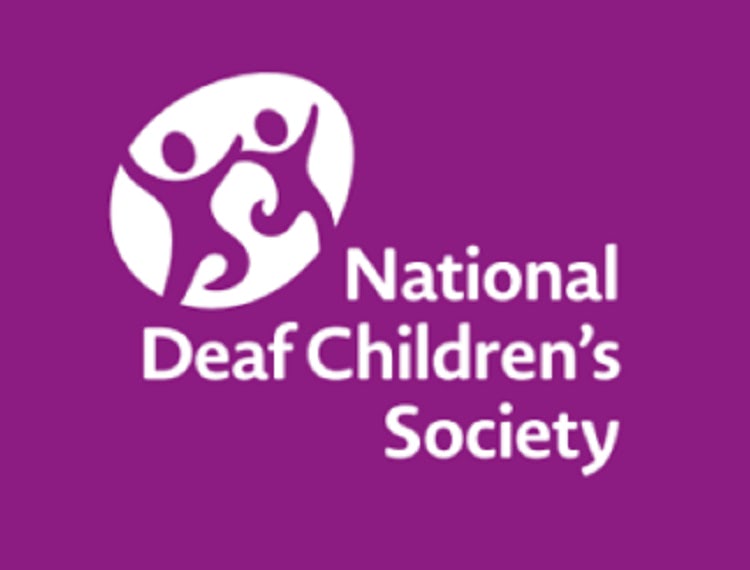‘Lost generation’ of deaf children falling a grade behind at GCSE

A ‘lost generation’ of deaf children are falling a whole grade behind their hearing classmates and most leave school with less than a grade 4/C in English and Maths, new Government data shows.
The results also reveal that despite the best efforts of deaf children to catch up with their peers, the gap between them will now take 21 years to close.
The new analysis comes from the National Deaf Children’s Society, which examined the Department for Education’s 2018 attainment figures.
It found that the average GCSE grade for a child without special educational needs or a disability per subject is 5, a strong C under the old system. For deaf children, this falls to 3.9, historically a grade D.
Less than half (48%) of deaf children now achieve a grade 4 or above in both Maths and English, compared to almost three quarters (71%) of other children.
Deaf children are also arriving at secondary school having already fallen behind. Less than half (43%) achieve the expected standard at reading, writing and maths at Key Stage 2 compared to 74% of other children.
There are similar concerns at Key Stage 1, with just over half (53%) of deaf children reaching the required standard, compared to 84% of their peers.
The National Deaf Children’s Society says that while there has been a slight improvement in deaf children’s grades since last year, it will take more than two decades to close the gap, resulting in a lost generation of deaf children.
The charity says that the situation is “utterly unacceptable” four years on from the biggest reforms to special needs education in decades. As a result, it is calling on the Government to provide additional funding so that every deaf child gets the support they need at school.
Susan Daniels OBE, Chief Executive of the National Deaf Children’s Society, said:
“These figures show the true depth of the crisis engulfing deaf education in this country. How much evidence does the Department for Education need before it acts?
“Deafness is not a learning disability, but deaf children are still falling a whole grade behind their classmates. Meanwhile, the Government is starving local councils of funding, meaning their support is cut back and their specialist teachers are being laid off.
“The Government needs to address the gap in results urgently and begin to adequately fund the support deaf children need. It promised every child in this country a world class education, but until deaf and hearing children progress and achieve at the same level, it is failing to deliver and that is utterly unacceptable.”
Cllr Anntoinette Bramble, Chair of the Local Government Association’s Children and Young People Board, said:
“Councils know that deafness can make life incredibly difficult for some children who experience it, and are doing all they can to support all children with special educational needs and disabilities to make sure they get the education they deserve.
“However councils are reaching the point where the money is simply not there to keep up with demand, pushing support for children with SEND to a tipping point.
“While it was good the Government announced money for SEND last year, it must use the forthcoming Spending Review to plug the estimated special needs funding gap facing councils of up to £1.6 billion by 2021.”
A Department for Education spokesperson said:
“Our ambition for children with special educational needs and disabilities, including those who are deaf, is exactly the same for every other child – to achieve well in education, and go on to live happy and fulfilled lives.
“The percentage of pupils with a hearing impairment getting either a grade 4 or C or above in both GCSE English and mathematics has increased in recent years but we know there is more to do. That is why we have introduced SEND reforms that ensure pupils have access to excellent support throughout their school years.
“We recognise that local authorities are facing cost pressures on high needs and that there is more to do which is why in December 2018 we announced an additional £250m in funding for high needs over this and next year.”
“The percentage of pupils with a hearing impairment getting at least a grade ‘4’ or ‘C’ in both GCSE mathematics and English was 48.0% in 2017/18 contrasted with 40% under the old testing system in 2011/12.
“We have increased high needs funding for children and young people with the most complex SEND from £5 billion in 2013 to £6 billion this year.”
Average attainment 8 scores:
|
Year |
Deaf children |
Children with no identified SEN |
All children |
|
2018 |
39.2 |
49.8 |
46.5 |
|
2017 |
37.5 |
49.5 |
46.3 |
|
2016 |
42.5 |
53.2 |
49.9 |
|
2015 |
41 |
52 |
48.4 |
*Attainment 8 measures a student’s average grade across eight subjects. English and Maths count twice.
Percentage of children achieving a grade 4/C or above in both English and Maths:
|
Year |
Deaf children |
Children with no identified SEN |
All children |
|
2018 |
48% |
70.6% |
64.2% |
|
2017 |
46.1% |
70.4% |
63.9% |
Figures for children reaching the expected standard in 2018:
Key Stage 2
|
|
Deaf children |
Children with no identified SEN |
All children |
|
Reading, writing and maths overall |
43% |
74% |
64% |
|
Reading |
56% |
83% |
75% |
|
Writing |
59% |
88% |
78% |
|
Grammar, punctuation and spelling |
59% |
87% |
78% |
|
Maths |
56% |
84% |
76% |
Key Stage 1
|
Year |
Deaf children |
Children with no identified SEN |
All children |
|
Reading |
53% |
84% |
75% |
|
Writing |
48% |
79% |
70% |
|
Maths |
52% |
84% |
76% |
|
Science |
60% |
90% |
83% |
According to the Department for Education, grades 4 to 5.5 are equivalent to a C under the old system. Grade 4s are a pass and grade 5s are a strong pass.
The average attainment 8 score for deaf children of 39.2. This means their average score per subject is 3.9 which, under the old system, would be a grade D.
The average attainment 8 score for children with no identified special educational needs is 49.8 or, per subject, 5 – a strong pass.
There have been improvements in achievement in some areas for deaf children. However, deaf children continue to fall a grade behind at GCSE and the gap is still as wide as it was in 2015.
The National Deaf Children’s Society’s position is that the situation is unacceptable and its analysis shows that the gap will still take 21 years to close at the current rate.











Responses